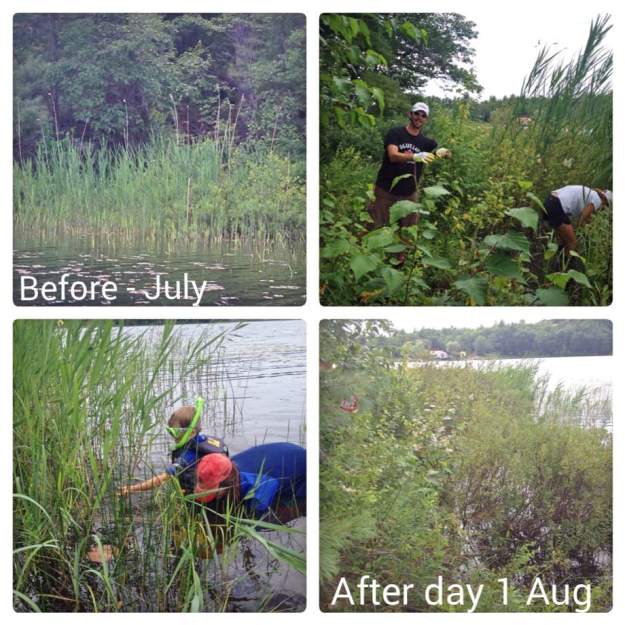2 teams of Phrag fighters (aka August Holidayers) spent a couple of hours cutting invasive Phragmites on the back of a beloved private island on Woods Bay. Our mission – cut and bag a relatively young stand using wetland ecologist Dr. Janice Gilbert’s suggestions which minimize interference with other native plant life.
Day 1
We prepared for battle with hand held garden shears , wetsuits from the 1980s, paper yard waste bags, water shoes, and delicious snacks for the weary. There was high morale among the younger troops and some trepidation between the parental units. Could we do this? After 2.5 hours we had cleared about 65% of the stand, had a few laughs, and greatly increased our confidence that we could complete the mission.
We felt good – we had done something concrete to help the Bay! We were rewarded by our hosts’ amazing gin and tonics dockside where we strategized for day 2.





